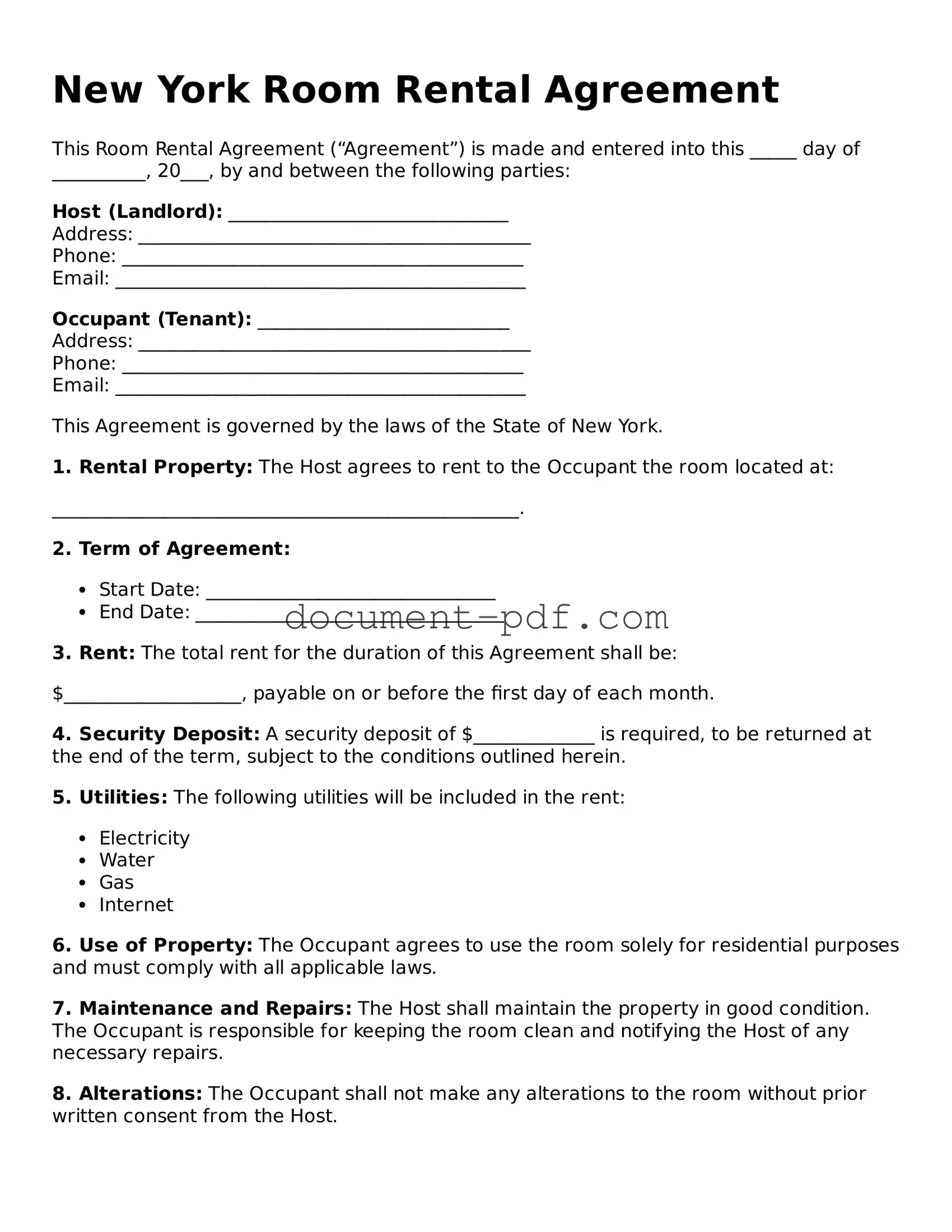New York Room Rental Agreement
This Room Rental Agreement (“Agreement”) is made and entered into this _____ day of __________, 20___, by and between the following parties:
Host (Landlord): ______________________________
Address: __________________________________________
Phone: ___________________________________________
Email: ____________________________________________
Occupant (Tenant): ___________________________
Address: __________________________________________
Phone: ___________________________________________
Email: ____________________________________________
This Agreement is governed by the laws of the State of New York.
1. Rental Property: The Host agrees to rent to the Occupant the room located at:
__________________________________________________.
2. Term of Agreement:
- Start Date: _______________________________
- End Date: _________________________________
3. Rent: The total rent for the duration of this Agreement shall be:
$___________________, payable on or before the first day of each month.
4. Security Deposit: A security deposit of $_____________ is required, to be returned at the end of the term, subject to the conditions outlined herein.
5. Utilities: The following utilities will be included in the rent:
- Electricity
- Water
- Gas
- Internet
6. Use of Property: The Occupant agrees to use the room solely for residential purposes and must comply with all applicable laws.
7. Maintenance and Repairs: The Host shall maintain the property in good condition. The Occupant is responsible for keeping the room clean and notifying the Host of any necessary repairs.
8. Alterations: The Occupant shall not make any alterations to the room without prior written consent from the Host.
9. Termination: Either party may terminate this Agreement by providing written notice at least _____ days prior to the end of the rental term.
10. Governing Law: This Agreement shall be governed by and construed in accordance with the laws of the State of New York.
11. Signatures:
Host Signature: _______________________________ Date: __________
Occupant Signature: __________________________ Date: __________
